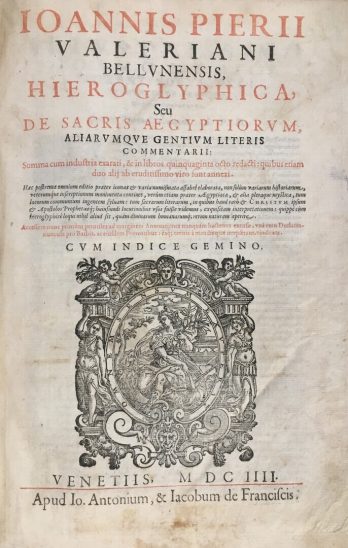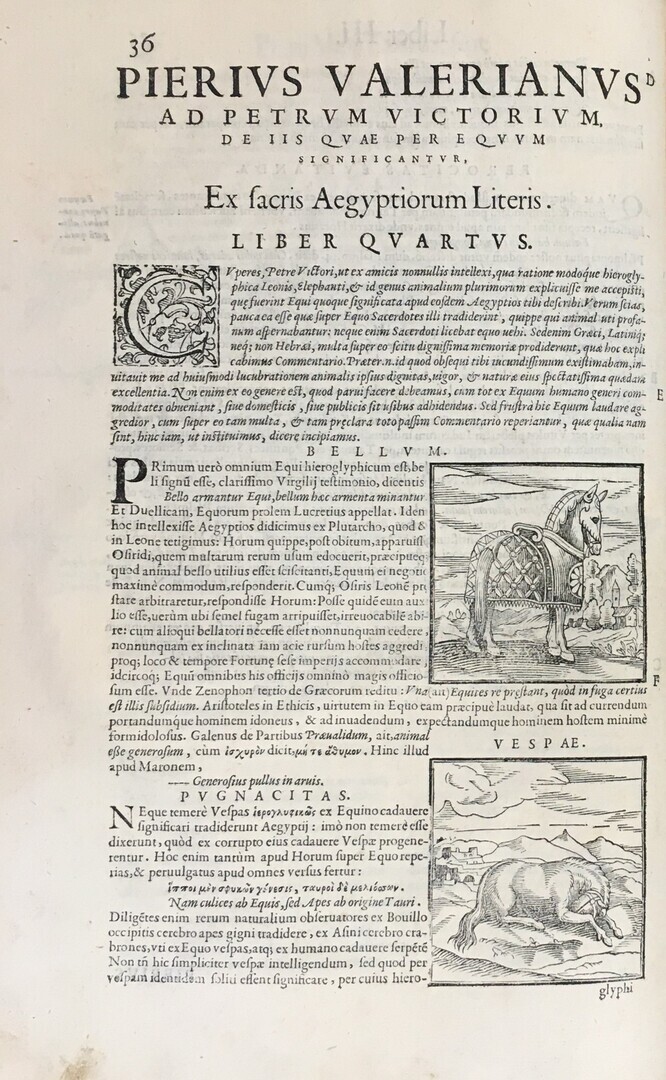Hieroglyphica, sive de Sacris Aegyptiorum, aliarumque gentium literis commentarii. Summa cum industria ezarato, & in libros quinquaginta octo redacti: quibus etiam duo alii ab eruditissimo viro sunt annexi. THREE PARTS IN ONE VOLUME.
Valeriano, Piero (1477-1558).
Synopsis
Pierio Valeriano, was a prominent Italian Renaissance humanist, specialising in the early study of Egyptian hieroglyphs. This work is considered to be one of his famous books, it is a study on hieroglyphics and their use in allegory.
Under the Medici popes Valeriano attained a number of positions and titles, including, promontory apostolic, secret chamberlain, and given a canonry in his home of Belluno. Throughout this period from 1523 to 1527, Valeriano made the most of this relative prosperity and security of income to continue his research of hieroglyphics dividing his time between Florence and Rome.
Valeriano’s Hieroglyphica was written following a frenzy of popularity surrounding the rediscovery of the Hieroglyphics of Horapollo, but was not published until after the initial excitement had subsided. For its day, the Hieroglyphica was the most concise Renaissance dictionary of symbols, an area of increasing interest at the time. The book was influenced largely by the Hieroglyphics of Horapollo, Valeriano’s lifetime of studying Egyptian antiquities throughout Italy, and by first hand knowledge passed down by his uncle Fra Urbano. Each entry contains a dedication to various people who supported, or influenced Valeriano in his epic compendium of imagery.
Based on Horapollo and from his own almost unlimited access to hieroglyphics and antiquities in both public and private collections, Valeriano produced this dictionary of symbols and hieroglyphs and a guide to much of the Renaissance iconography, which served as a precursor to books such as Cesare Ripa’s Iconologia. The book is divided into sixty chapters and contains an amazing collection of woodcuts illustrating Valeriano’s text. These engravings are unattributed; however, they show similarity stylistically to other German and Swiss artists of the period. Some of the creatures and scenes depicted are haunting and strange and show that the Renaissance humanists’ interests could still be piqued by the old medieval curiosities and explanations of the unknown.
The Hieroglyphica was published in Basel in 1556, reprinted seven times over the next 120 years in Latin, translated into French in 1576 and 1615, and Italian in 1602.








